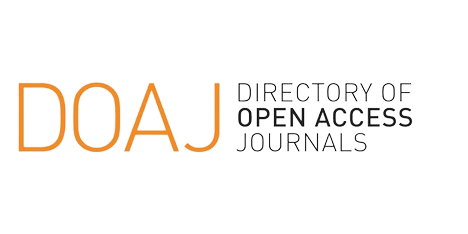A GLOBAL REVIEW OF NON-LIVING RESOURCES ON THE EXTENDED CONTINENTAL SHELF
Abstract
This contribution reviews the current state of knowledge of non-living resource potentials within the extended "legal " continental shelf (ELCS). The ELCS lies beyond the 200 nautical mile jurisdiction of nation states' exclusive economic zones, but within the outer limits defined by the criteria established under the 1982 United Nations Convention on the Law of the Sea, Article 76 (1982). The offshore non-living resource potentials are based on a statistical evaluation of known occurrences and reserves, the geologic environments favourable for their formation, models for sediment type and thickness, and basement composition. The result is an assessment of the potential for non-living marine resources to occur. The resources are divided into different types, based on their origin. Each is treated separately with a brief description of modes of formation followed by location, grade and resource estimate. Because placer deposits, comprising heavy minerals, gold and diamonds, are limited to near-shore areas they have negligible resource potential in the ELCS regions. Similarly, because phosphorite occurs mainly in the equatorial oceans between 400 m and 1,500 m depth, they too have limited resource potential in ELCS areas. Evaporite deposits occur on many continental margins. However, they only occur within ELCS regions off eastern North America and western central Africa, where their resource potential is low. Polymetallic sulphides (PMS) are formed at volcanically active plate boundaries. With the exception of parts of the west Pacific and off the western coast of North America, where volcanically active plate boundaries are close to the continental margin, PMS resources are low in the ELCS regions. The major resource potential within the ELCS regions is held in iron-manganese nodules and crusts, oil, gas and gas hydrates. Four elemental metals are the main components of value in manganese nodules and crusts: manganese, copper, nickel and cobalt. Extrapolating known occurrences world wide, the total amount of these nodules and crusts within the ELCS regions may be as much as thirteen billion tonnes. Conventional oil and gas comprise an estimated 106 b.b.o.e. (billion barrels of oil equivalent) with a similar estimate of 115 b.b.o.e. for gas hydrates. In total, the resource potential (excluding recovery and production costs) contained within the ELCS regionsof the world amounts to an estimated US$ 11,934 trillions (at today's raw commodity prices).
Keywords: Extended "legal " continental shelf; Marine Minerals Resources.
Visão global dos recursos minerais não renováveis da plataforma continental
Este trabalho examina o estado do conhecimento dos recursos minerais potenciais não renováveis dentro da Plataforma Continental Jurídica (Extended "Legal" Continental Shelf - ELCS). A ELCS localiza-se para além das 200 milhas náuticas sob jurisdição dos respectivos estados-nações. Os recursos potenciais não renováveis da ELCS são baseados numa avaliação estatística das ocorrências conhecidas e reservas, nos ambientes geológicos favoráveis a sua formação, em modelos para o tipo e espessura dos sedimentos existentes e na composição do substrato. Os recursos podem ser classificados em diferentes tipos, de acordo com a sua origem. Os depósitos de placers, constituídos por minerais pesados, ouro e diamantes, estão limitados as áreas costeiras. Estes constituem recursos praticamente negligíveis nas ELCS. As fosforitas ocorrem principalmente nos oceanos equatoriais a profundidades compreendidas entre os 400 e 1500 m, estes constituem, igualmente, recursos limitados nas ELCS. Os depósitos evaporíticos ocorrem em muitas margens continentais; contudo, eles encontram-se somente no interior das ELCS localizadas na parte Leste da América do Norte e no Oeste da África Central. Os sulfetos polimetálicos são formados nos limites de placas com vulcanismo ativo. Com exceção das regiões do Pacífico Oeste e da Costa Oeste da América do Norte, onde os limites de placas estão muito próximos das margens continentais, estes recursos são relativamente baixos nas ELCS. Estão entre os recursos de maior potencial no interior das ELCS, os nódulos e crostas de ferro-manganês, petróleo, gás e hidratos de gás. Os principais componentes de valor nos nódulos e crostas de manganês são quatro metais: cobre, níquel, cobalto e manganês. Fazendo uma extrapolação das ocorrências mundiais conhecidas, a quantidade total dos nódulos e crostas no interior das ELCS pode atingir as treze bilhões de toneladas. Uma estimativa para o petróleo e gás convencionais situa-se nos 106 B.B.O.E. (billion barrels of oil equivalent - equivalente em bilhões de barris de petróleo); valor semelhante é obtido para a estimativa dos hidratos de gás - 115 B.B.O.E. No total, os recursos potenciais (excluindo-se os custos de recuperação e de produção) contidos nas ELCS do nosso planeta atingem uma estimativa de 11,934 trilhões de dólares americanos (aos preços a que estas matérias primas são hoje comercializadas)
Keywords: Plataforma Continental Jurídica;Recursos Minerais Marinhos.
Keywords
Full Text:
PDF
a partir do v.37n.4 (2019) até o presente
v.15n.1 (1997) até v.37n.3 (2019)
Brazilian Journal of Geophysics - BrJG
Sociedade Brasileira de Geofísica - SBGf
Av. Rio Branco 156 sala 2509
Rio de Janeiro, RJ, Brazil
Phone/Fax: +55 21 2533-0064
E-mail: editor@sbgf.org.br
Since 2022, the BrJG publishes all content under Creative Commons CC BY license. All copyrights are reserved to authors.
Indexing



Sponsorship


